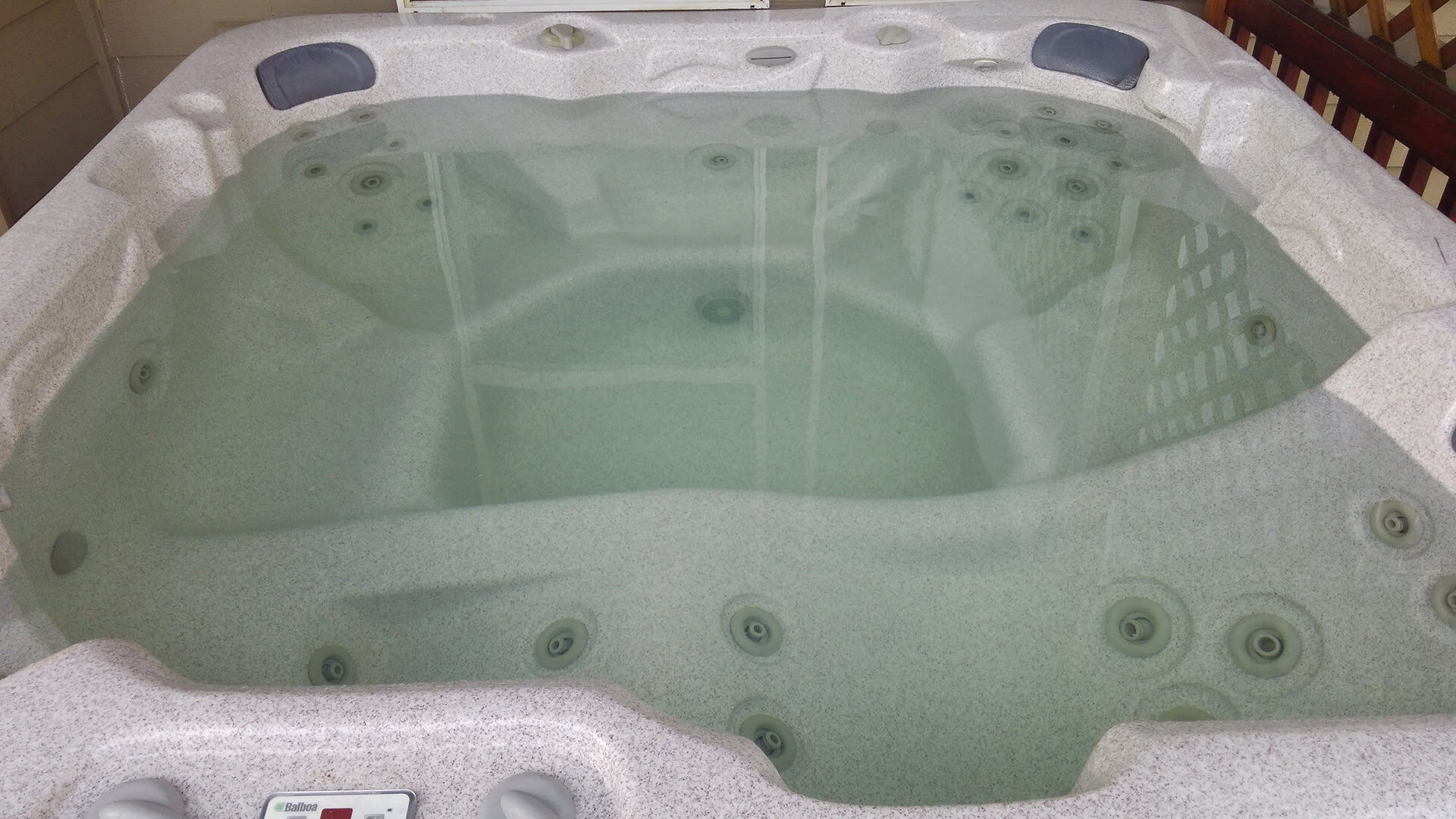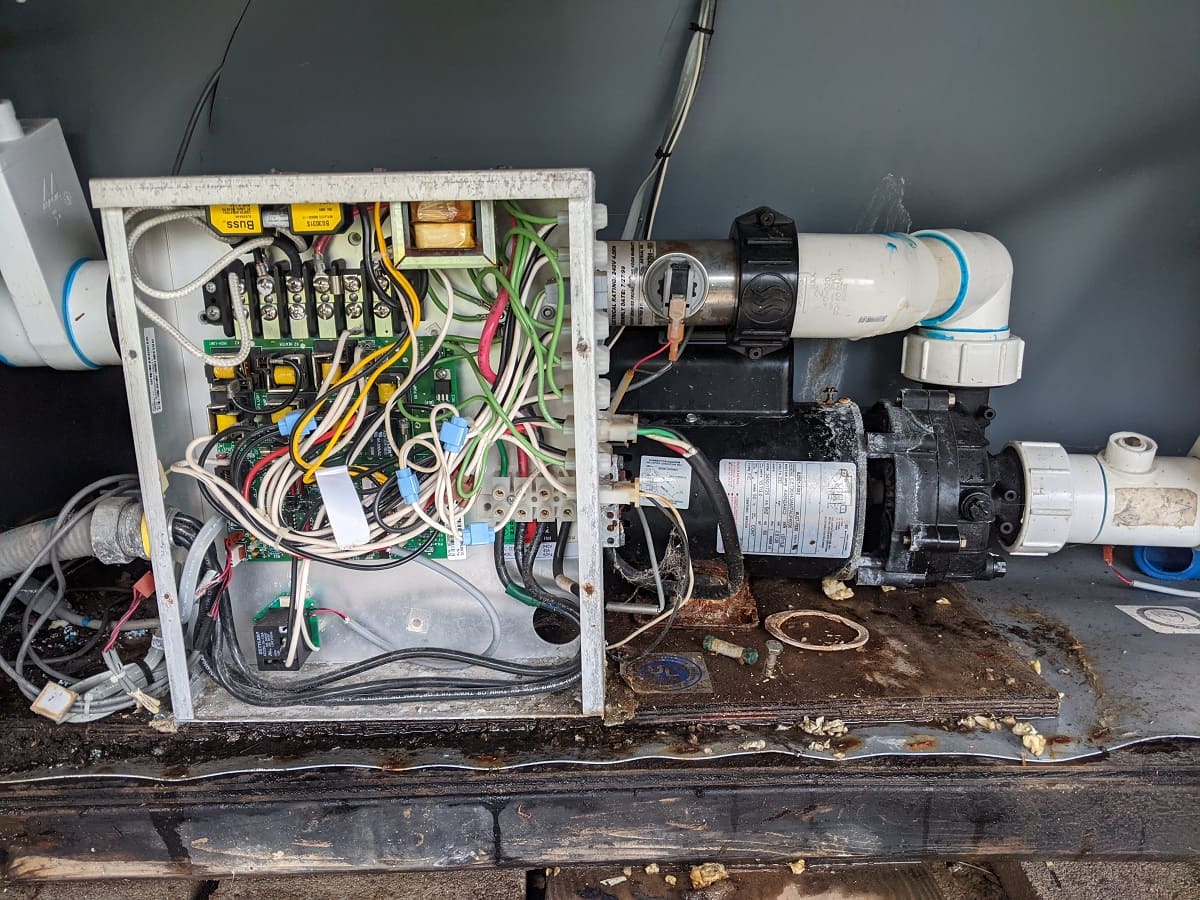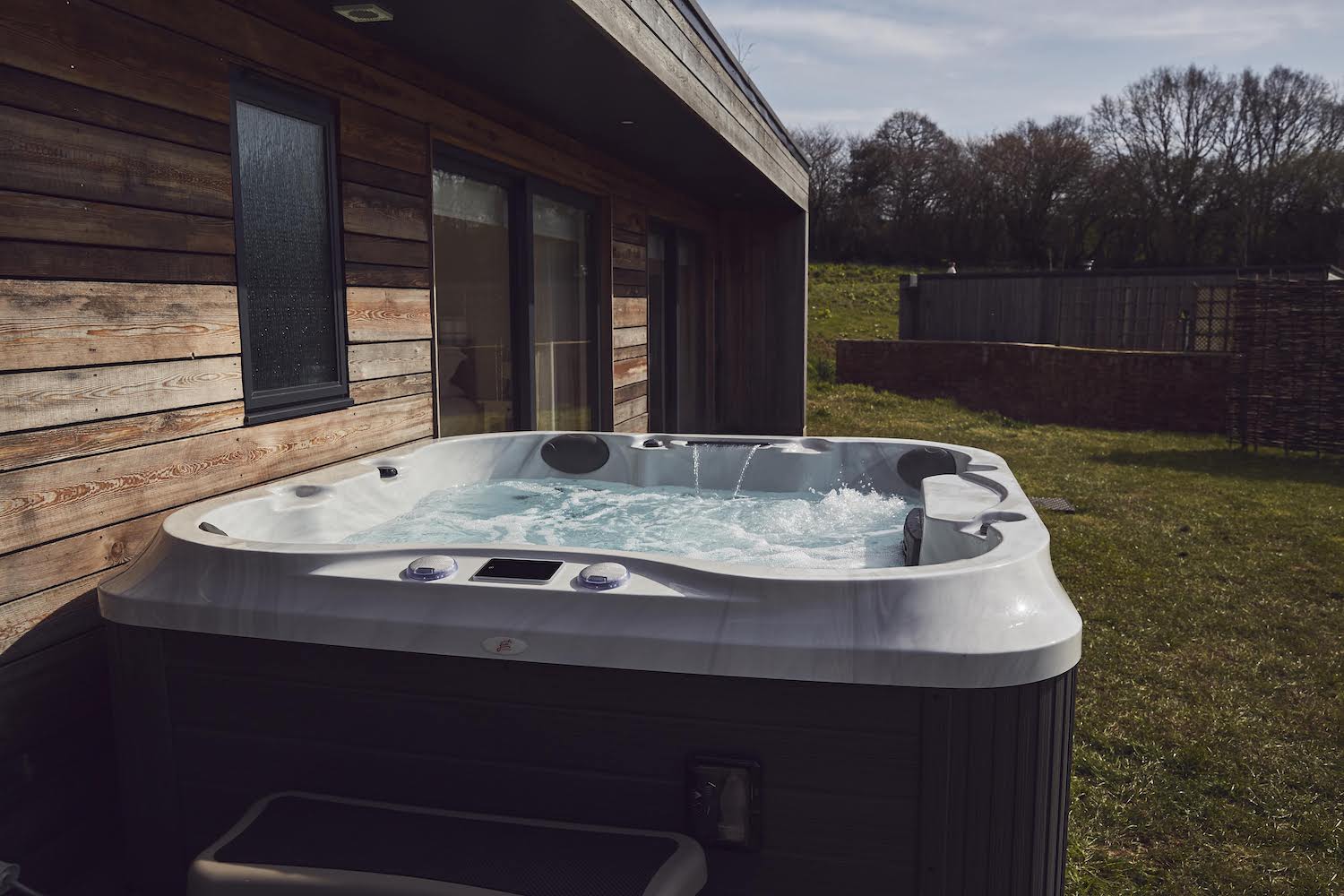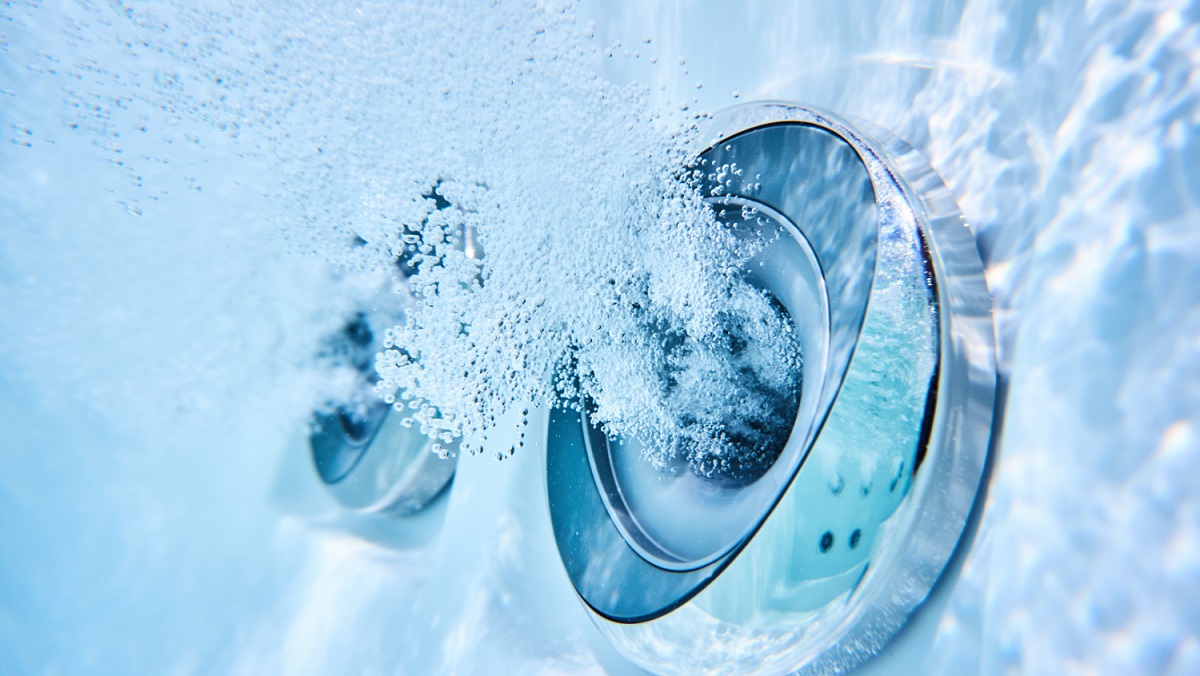Home>Gardening & Outdoor>Pool & Spa Care>Why Does My Hot Tub Lose Water


Pool & Spa Care
Why Does My Hot Tub Lose Water
Published: December 30, 2023
Discover the reasons why your hot tub loses water and learn essential pool and spa care tips to prevent water loss. Explore expert advice on maintaining your hot tub efficiently.
(Many of the links in this article redirect to a specific reviewed product. Your purchase of these products through affiliate links helps to generate commission for Storables.com, at no extra cost. Learn more)
Introduction
Welcome to the relaxing world of hot tubs, where the warm, bubbling waters provide a sanctuary from the stresses of everyday life. However, if you've noticed that your hot tub seems to be losing water, you might be feeling more stress than relaxation. Understanding the reasons behind hot tub water loss is crucial for maintaining the optimal performance of your spa.
In this comprehensive guide, we'll delve into the various factors that can contribute to hot tub water loss, ranging from natural evaporation to more concerning issues such as leaks. By gaining a deeper understanding of these causes and learning how to identify and address them, you'll be better equipped to keep your hot tub in pristine condition.
So, let's embark on a journey to uncover the mysteries of hot tub water loss, empowering you to enjoy a consistently rejuvenating experience in your personal oasis.
Key Takeaways:
- Hot tub water loss can be caused by evaporation, leaks, and equipment issues. Regular maintenance, proper water level adjustment, and cover usage can help prevent excessive water loss and preserve your spa’s functionality.
- Identifying and fixing hot tub water loss involves visual inspection, dye tests, and professional leak detection. Regular maintenance, seal checks, and conservative water use can help mitigate water loss and maintain your spa’s water level.
Read more: Why Does Hot Tub Water Smell
Understanding Hot Tub Water Loss
Hot tub water loss can be a perplexing issue, especially for those new to the world of spa ownership. It's essential to recognize that a certain degree of water evaporation is normal due to factors such as heat and air movement. However, when the rate of water loss exceeds what is considered typical, it’s important to investigate the underlying causes.
One primary factor contributing to water loss is evaporation. The combination of high temperatures, especially in warmer climates, and the agitation of water from jets can lead to noticeable evaporation. Additionally, regular use of the hot tub, especially with the cover off, can accelerate this process.
Another common cause of water loss is splashing. During use, water can be inadvertently splashed out of the tub, particularly if the jets are set to high or if individuals are moving vigorously within the spa.
Understanding the natural processes that can lead to water loss is crucial for distinguishing between expected and abnormal levels of depletion. By recognizing these factors, hot tub owners can better gauge when intervention is necessary to address excessive water loss and prevent potential damage to the spa.
Common Causes of Hot Tub Water Loss
Hot tub water loss can stem from various sources, some of which are easily manageable, while others may require professional attention. Understanding the common causes is pivotal in effectively addressing and resolving the issue.
- Evaporation: As mentioned earlier, evaporation is a natural occurrence in hot tubs. High temperatures and air movement, particularly in arid climates, can accelerate this process. While some level of evaporation is expected, excessive water loss may indicate other contributing factors.
- Leakage: Undetected leaks in the hot tub's plumbing or shell can lead to significant water loss over time. These leaks can be challenging to identify, often requiring a systematic inspection of the spa's components.
- Damaged Seals: The integrity of the hot tub's seals, including those around the cover and fittings, is crucial for preventing water seepage. Over time, seals can degrade or become damaged, leading to potential leaks and subsequent water loss.
- Incorrect Water Level Settings: Improper adjustment of the water level settings can result in water overflowing from the tub, leading to unnecessary depletion. Ensuring that the water level is within the recommended range is essential for minimizing wastage.
- Drainage Issues: Inadequate drainage systems or obstructions in the tub's drainage outlets can impede proper water flow, potentially causing water to escape from unintended areas.
- Equipment Malfunctions: Faulty components such as pumps, valves, or filters can contribute to water loss if they are not functioning optimally. Regular maintenance and prompt repairs are essential for preventing such issues.
By familiarizing yourself with these common causes of hot tub water loss, you can take proactive measures to mitigate the risk of excessive depletion and maintain the water level within the recommended range. Identifying the specific cause of water loss is the first step towards implementing targeted solutions to preserve the integrity of your hot tub.
How to Identify and Fix Hot Tub Water Loss
Identifying and addressing hot tub water loss requires a systematic approach that encompasses both observation and targeted interventions. By following these steps, you can effectively pinpoint the source of the issue and implement appropriate remedies to mitigate water loss.
Identifying Water Loss:
1. Visual Inspection: Regularly visually inspect the area around the hot tub for any signs of water accumulation or damp spots, which may indicate a leak or drainage issue.
2. Monitoring Water Level: Keep track of the water level in the hot tub over several days, taking note of any significant fluctuations that exceed normal evaporation rates.
3. Dye Test: Conduct a dye test by adding a few drops of food coloring near suspected leak points, such as fittings or seams. If the dye is drawn into these areas, it can indicate the presence of a leak.
Read more: Why Is My Hot Tub Water Cloudy And Foamy
Fixing Water Loss:
1. Seal and Fitting Inspection: Thoroughly examine the seals, gaskets, and fittings of the hot tub for signs of wear or damage. Replace any compromised components to prevent water seepage.
2. Plumbing Assessment: Check the plumbing system for leaks or loose connections. Tighten fittings and inspect the pipes for any visible signs of damage or corrosion.
3. Professional Leak Detection: If the source of water loss remains elusive, consider enlisting the expertise of a professional leak detection service equipped with specialized tools to pinpoint hidden leaks within the hot tub's structure.
4. Adjusting Water Level Settings: Ensure that the water level in the hot tub is maintained within the recommended range to prevent overflow and unnecessary water loss.
5. Regular Maintenance: Implement a routine maintenance schedule to inspect and clean the hot tub's components, including filters, pumps, and drainage systems, to prevent equipment malfunctions that may contribute to water loss.
By diligently following these steps, you can effectively identify the causes of hot tub water loss and apply targeted solutions to rectify the issue, preserving the water integrity of your spa for continued enjoyment.
Preventing Hot Tub Water Loss
Preventative measures play a crucial role in maintaining the water level and integrity of your hot tub, minimizing the risk of excessive water loss and associated issues. By incorporating these proactive strategies into your hot tub maintenance routine, you can safeguard against unnecessary depletion of water and preserve the optimal functioning of your spa.
Cover Usage:
Utilize a high-quality, well-fitted cover for your hot tub when it is not in use. A durable cover acts as a barrier against evaporation and minimizes the exposure of the water to external elements, helping to retain the water level and reduce overall water loss.
Maintain Seals and Fittings:
Regularly inspect and maintain the seals, gaskets, and fittings of your hot tub to ensure their integrity. Replace any worn or damaged components to prevent water seepage and potential leaks, preserving the water level within the tub.
Read more: Why Is My Hot Tub Water Level Dropping
Proper Water Level Adjustment:
Adhere to the recommended water level settings for your hot tub, ensuring that it is neither too high nor too low. Proper water level maintenance minimizes the risk of overflow and unnecessary water loss, contributing to the overall conservation of water in the spa.
Regular Maintenance and Inspections:
Establish a routine maintenance schedule for your hot tub, encompassing thorough inspections of the plumbing, equipment, and overall structural integrity. Promptly address any issues, such as leaks, damaged components, or drainage obstructions, to prevent water loss and maintain the efficient operation of the spa.
Conservative Water Use:
Encourage mindful water use practices when enjoying your hot tub, such as minimizing splashing and ensuring that the tub's occupants are aware of the impact of excessive movement on water loss. By promoting awareness, you can help mitigate unnecessary depletion of water during spa sessions.
Professional Servicing:
Engage professional hot tub servicing as needed, including periodic assessments by qualified technicians to identify and address potential sources of water loss. Professional expertise can contribute to proactive maintenance and the early detection of issues that may lead to water loss.
By integrating these preventative measures into your hot tub care regimen, you can effectively mitigate the risk of water loss and uphold the optimal water level within your spa. These proactive steps contribute to the longevity and sustainability of your hot tub, ensuring a consistently enjoyable and well-maintained relaxation oasis.
Read more: Why Does My Hot Tub Keep Running
Conclusion
As you navigate the realm of hot tub ownership, understanding the dynamics of water loss and its potential sources is instrumental in preserving the functionality and enjoyment of your spa. By recognizing the interplay of factors such as evaporation, leaks, and equipment integrity, you can proactively address issues related to water loss and maintain the optimal water level within your hot tub.
Through diligent observation, regular maintenance, and the implementation of preventative measures, you can effectively mitigate the risk of excessive water loss, safeguarding the integrity of your spa for sustained relaxation and enjoyment. From monitoring water levels to conducting thorough inspections, your proactive approach to hot tub care empowers you to identify and address potential sources of water loss, thereby sustaining the rejuvenating oasis that your hot tub represents.
By embracing a holistic approach to hot tub maintenance, encompassing both vigilance and targeted interventions, you can relish the tranquility of your spa with the assurance that water loss is managed effectively. As you embark on this journey, may your hot tub serve as a sanctuary of relaxation and rejuvenation, enveloping you in warmth and serenity as you immerse yourself in its soothing waters.
With a deepened understanding of hot tub water loss and the tools to address it, you are poised to embark on a continued journey of spa ownership, where the therapeutic allure of your hot tub remains undisturbed by the specter of excessive water loss. Embrace the art of hot tub care, and revel in the restorative embrace of your personal oasis.
Frequently Asked Questions about Why Does My Hot Tub Lose Water
Was this page helpful?
At Storables.com, we guarantee accurate and reliable information. Our content, validated by Expert Board Contributors, is crafted following stringent Editorial Policies. We're committed to providing you with well-researched, expert-backed insights for all your informational needs.













0 thoughts on “Why Does My Hot Tub Lose Water”